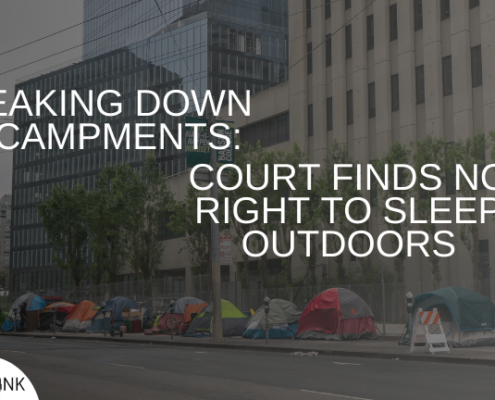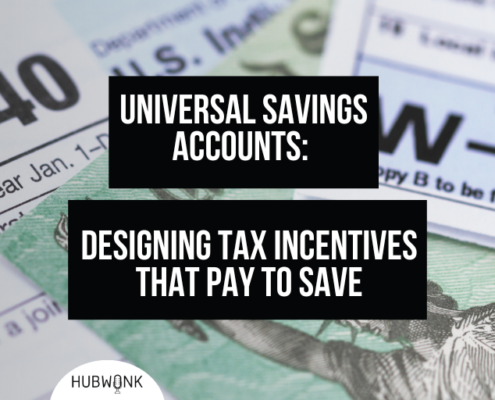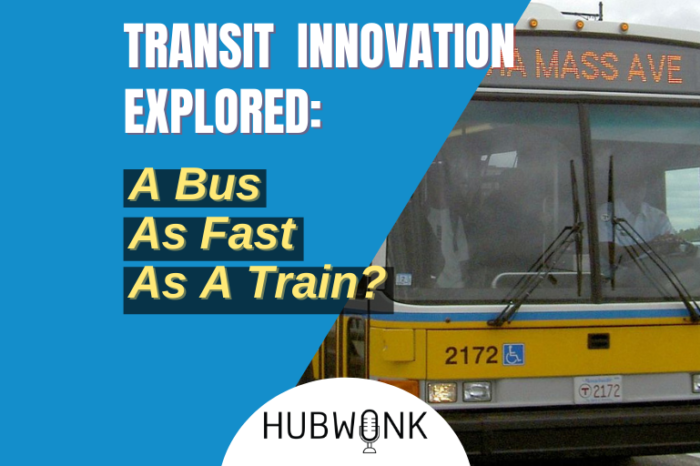Transit Innovation Explored: A Bus As Fast As A Train?
/in Blog: MBTA, Blog: Transportation, Economic Opportunity, Featured, News: Transportation, Podcast Hubwonk /by Editorial Staff
Hubwonk host Joe Selvaggi talks with transportation expert Ian Ollis about the findings of his new research paper, “Bus Rapid Transit: Costs and Benefits of a Transit Alternative,” which examines the benefits of building Bus Rapid Transit to serve communities looking for faster transit alternatives to a car.
Guest:
 Ian Ollis is a former South African Member of Parliament having served two terms. He was the Shadow Minister of Transportation, Shadow Minister of Labor, and Shadow Minister Education during this time. In 2013 he drafted the Democratic Alliance national Transportation Policy. During his time as Member of Parliament Ian exposed a number of cases of corruption leading to major reforms. Previously Ian served as a City Councillor in Johannesburg, serving on the Transportation and City Planning Committees. He has a Masters Degree in Arts from the University of the Witwatersrand in South Africa. Ian earned a City Planning Masters degree in transportation at M.I.T and interned at Pioneer Institute as a Senior Research Analyst developing a transportation policy platform.
Ian Ollis is a former South African Member of Parliament having served two terms. He was the Shadow Minister of Transportation, Shadow Minister of Labor, and Shadow Minister Education during this time. In 2013 he drafted the Democratic Alliance national Transportation Policy. During his time as Member of Parliament Ian exposed a number of cases of corruption leading to major reforms. Previously Ian served as a City Councillor in Johannesburg, serving on the Transportation and City Planning Committees. He has a Masters Degree in Arts from the University of the Witwatersrand in South Africa. Ian earned a City Planning Masters degree in transportation at M.I.T and interned at Pioneer Institute as a Senior Research Analyst developing a transportation policy platform.
WATCH:
Get new episodes of Hubwonk in your inbox!
Read a Transcript of This Episode
Please excuse typos.
Joe Selvaggi:
This is Hubwonk I’m Joe Selvaggi.
Joe Selvaggi:
Welcome to Hubwonk, a podcast of Pioneer Institute, a think tank in Boston. As Boston and other cities emerge from the COVID 19 epidemic. Traffic congestion has returned as well. Studies made before the pandemic observe that highway congestion cost Boston commuters and additional 164 hours in their car each year, prompting many to seek faster alternatives. The MBTA offers rapid transit rail service into Boston, but the reach of its network is limited and new train lines are extremely expensive to build the MBT bus network reaches more communities, but as seen as a less attractive slower option owing to their cumbersome boarding process and traveling in the same congestion as cars, fortunately, a new form of transit is appearing on the horizon bus, rapid transit, or BRT. BRT is a concept that enables a bus to operate similar to a train building lanes and stations into the current built environment that reduce traffic and signal delays, and streamline boarding.
Joe Selvaggi:
This new conception of a bus could revolutionize Boston’s transit capabilities by bringing rapid transit to currently unserved communities and delivering an attractive alternative to cars at a cost that is far below building new train or light rail services. My guest today is Ian OIS, director of transportation planning at the Fredericksburg area, metropolitan planning organization, an author of the recently released pioneer Institute research paper, entitled bus, rapid transit costs and benefit of a transit alternative. Mr. Ollie’s research looks at the challenges of Boston’s master system and suggest that B RT can offer commuters a new cost effective addition to our transportation landscape. This paper offers insight on ways to build local stakeholder support for BRT, and then use that success to expand service more widely. When I return, I’ll be joined by transportation researcher, Ian O Okay. We’re back. This is hub won. I’m Joe Selvaggi, and I’m now joined by Ian Ollis, Director for Transportation Planning in the Fredericksburg Area Metropolitan Planning organization, and author of the recently released Pioneer Institute research paper, entitled “Bus Rapid Transit: Costs and Benefit of a Transit Alternative.” Welcome to Hubwonk, Ian.
Ian Ollis:
Thank you for having me I look forward to chatting with you.
Joe Selvaggi:
All right, before we get started, I’m sure at least one or two of our listeners will hear a little bit of an accent and wonder where you started life. You’re not a Bostonian. So give us a little bit of background on you.
Ian Ollis:
Sure. I was born and raised in South Africa, so actually I’m a fourth generation African and came to Boston in mid 2018 to go back to college. So I went back to educate myself a second time. I went to MIT and completed another degree there in transportation planning and then worked in Boston for Pioneer Institute for a while, and also for Transit Matters in Boston. So I spent some time working in Boston and I’ve recently taken up a position in Virginia doing transportation planning again.
Joe Selvaggi:
Wonderful. Like so many of us you came to Boston for school. So you say you’re now in Fredericksburg applying your knowledge that you learned at MIT what was it that you studied specifically at MIT, urban planning, but was there a specific focus on transportation?
Ian Ollis:
Yeah, transportation planning. The degree is technically a masters in city and regional planning. But my course focus and my thesis were all on transportation planning. Looking specifically at things like mode shift, how do you convince people to take a different form of transportation than they used to? Why should they take a different form of transportation? What are the results of either option, if everybody buys a car, what does that look like on the roads? If everybody takes transit, what does that look like? So the shifts between different modes was what I looked at in my thesis and, and just transportation planning generally. So how do we plan for future roads? How do we plan future train lines? How do we plan a bus system? And what are the things that go into deciding which of those are the best options for a particular locality? So all that was part of my study.
Joe Selvaggi:
Wonderful. So you’re well suited for writing this paper. I think there’s a reason it reads so well. And so let’s start with that. Let’s talk about the bus rapid transit. But as a bit of background your analysis is done on the backdrop of the congestion in Boston. You cite some data at the start or the top of the paper talking about how bad Boston traffic was before the pandemic. You mentioned that it was the worst in America and among the top 10 worst in the world. So say more about that.
Ian Ollis:
Absolutely. So and several other organizations, Texas A and M university published these annual statistics on congestion in the United States and also around the world and Boston and the greater Metro area have frequently scored in the top 10 of worst places in the United States. And occasionally one of the worst places in the world for congestion, and they measure congestion by the delays on your trip. And also the amount of extra time that you spend in traffic and Boston frequently, or the greater Metro area, Boston frequently scores very badly on all of those metrics. The one year it was the worst in the United States, some years it’s the third worst or, or the fourth worst, but typically it’s always in the top five for that particular reason. And so it, it’s a major problem that you have to deal with in the Boston Metro area is, is how do you deal with this growing congestion?
Ian Ollis:
Because the population grows success, breed, success, breeds, congestion, right? So if your city is successful at attracting lots of new folks, you are gonna have increased congestion and you’re gonna have to find ways to deal with it. So this particular paper then says B R T bus, rapid transit is one of the possible solutions to congestion remembering that the it’s always a package. You, you, you need to do it multiple things simultaneously. And this paper proposes that bus rapid transit is one of the solutions that could really assist in taking care of that long term congestion problem that Boston has been having for decades.
Joe Selvaggi:
Yeah. I wanna put a finer point on that one. One statistic that was mentioned is because of the average Boston commuter spends an extra 164 hours getting to work that they would not where there no congestion, if we absolutely bake, if we bake that into a 40 hour week, that’s a month of work in traffic. So that’s a sobering reality. So I, I wanted to offer that as the backdrop for our conversation, because if we could, we would all like to spend a little less time in traffic. Now we’re gonna go deep into what public transit is all about. Again, you’re an expert in this field. Let’s define our terms because as you say bus rapid transit is one of many forms of rapid transit define for our listeners. Some of the other alternative, if I’m gonna get to work using mass transit, what are my alternatives?
Ian Ollis:
So you could use a subway train typically most metropolitan cities have a subway system in the larger cities. And that is a set of trains that run in tunnels underground in the Boston Metro area. You’ve got thet, the MBTA subway trains, the bread line, the green line, the orange line, the blue line, the, the green line effectively is, is in some cities, a different alternative because on the, when it’s above ground, it is a light rail system or a tram. And people use those, those terms interchangeably. So you could use a light rail or tra system. You could use subway tunnels with subway trains as you have in Boston or New York. You could have a regular bus. So the, the typical yellow MBTA, regular buses of are in on the road and often in regular traffic. And that we can have a discussion about that because those buses, if you don’t have special bus lanes or other facilities, the bus is gonna take just as long as the car will, and it doesn’t help because the bus also has to stop every, so to pick up and drop off folks. So it’s gonna take a long time a regular bus if you’ve got congestion and there’s no accommodations for that bus specifically, the bus is gonna be stuck behind you or in front of you in the traffic in a normal sense.
Joe Selvaggi:
Sure, sure. Okay. So you’ve, you’ve laid out the the framework you’ve got, I guess heavy rail, which is the commuter rail, the purple line. Then you’ve got subways which are, as you mentioned, all the different colored lines. And when the, the green line comes outta the ground, it becomes light rail. Again, it moves along with cars besides them, but, and interacts, I guess, with a congestion, but it has its own sort of space. And then last of all is, is the bus that you mention the yellow bus. And unfortunately it’s thrown in the same congestion that our cars are. So in its current form it, it suffers from some of the challenges that you would if you were to take your car. So there I think is a good place to jump off. So you, you mentioned bus rapid transit as something different from a bus. So you’ve got the yellow bus, you’ve got bus, rapid transit share with our listeners. What, how does a bus rapid transit system differ from a regular bus system?
Ian Ollis:
So there are four or five big differences around the world that they use to make something, a bus, rapid transit system. The first thing is that they have rapid boarding. So the idea is to try and make the floor of the bus, the same high as the floor of the bus stop. They call them bus stations so that you can push your wheelchair or your stroller straight into the bus without any stairs. You can walk straight into the bus without any stairs. And the floor is level that is added to, by, with a second piece of technology, which is off the bus fair collection. So the driver does not get involved with collecting your money fiddling with coins and change or a slot in the front of the bus, where you put your, your money in. The fare is collected off of the bus it’s did in the bus station or the bus stop itself so that you don’t have money having to change hands on the bus, because that takes time.
Ian Ollis:
So you, you imagine the queue of people climbing up the stairs into a bus, standing at the front, tapping their T card, or fiddling with coins and notes to try and pay the none of that happens on a full completed BRT system. You collect the money somewhere else. So that speeds up the process of boarding new people onto the bus and getting them off the bus. The big change is of course, that you try with a BRT system, a bus rapid transit system to have a dedicated bus lane preferably for the whole route. But in many cases, when you have to put a bus rapid transit system on an existing roadway with existing limitations, you have to alternate that with some dedicated bus lanes and some where the bus has to unfortunately still operate in the regular traffic.
Ian Ollis:
So it depends on how much land you’ve got available. If you have land available, it’s preferable to have the whole route, a completely dedicated bus lane. And, and, and these kinds of features together, the trip quick, you get on and off the bus, much quicker than a regular bus. You pay the fair somewhere else. You get on a level floor, the bus operates in a dedicated lane. And then in, in some cases they also have signal preference for the bus. So you arrive at the intersection, the bus is allowed to go few before the cars. So the bus lane, the light goes, the bus moves forward a few seconds later, the light goes again, and the cars move forward. So the bus can get in front of the queue in a sense. And all of that together means that the bus is quicker than your car, because it’s not stuck in traffic it’s in its own lane.
Ian Ollis:
The only thing in that lane is the bus in front of it. So the buses tend to move quicker like a train does because it eliminates the traffic. It eliminates the slow boarding and, and getting off the bus and, and as a much faster system. So that’s typically what a BRT is when you have to retrofit a city with BRT, you sometimes have to pick, and is those elements that you can afford, and that can actually be accommodated in the right of way of the roadway where you’re trying to put it in. So you can’t always have everything. And so they talk about a five star gold B R T, or a four star or three star, depending on which of those particular measures you can implement on a particular roadway.
Joe Selvaggi:
So this sounds again, you use the closest analogy there sounds like the green line in Brookline with tires instead of wheels. But even there, we haven’t chosen to make level boarding or stream the fair collection process. So it would seem to me that we should walk before we can run. Is there any planet, a way to help the the green line become, let’s say more rapid than it is now.
Ian Ollis:
So the pioneer Institute hasn’t put out a paper to, to deal with that particular thing, as far as I’m. But the MBTA has been looking at ways to speed up the green line. And so they’ve, they’ve looked at a couple of things to, to consolidate two stations into one to two green line stops into one, and they’re looking at the fair election system to try and eliminate having cash on, on the, on the train. But there have been local pressure groups that have been trying to convince the tea to still allow for the cash on, on the buses and, and train. So it, it’s a bit of a push and pull between the local community and certain groups, certain disabled people’s groups, and so on with the M B T a as to how much of that to do and how much not to do, but it’s a trade off.
Ian Ollis:
I mean, the public, essentially who, who express their views have a trade off, do we want to substantially faster without some of these measures like cash on the bus and train, or do you want halfway where you, you have some of the measures, but you don’t want all of them and, and are the public happy to, to have two stops or stations consolidated on the green line or not? If, if you have those, you’re gonna get quick FA the trip’s gonna be faster. You’re gonna get to work or to school or to the shops quicker, but if you still want all of the stops it takes longer to get there. And so all of these things are a, are a negotiation, I guess, with the commuter, the consumer and, and the operator.
Joe Selvaggi:
So it sounds like an ambitious as you say, there’s a lot of choices, a lot of trade offs step, step back a bit and say, okay, look, buses, that’s not a new technology. What you describe seems fairly intuitive and not highly technical as far as a solution goes. Is, is this concept of bus rapid transit used anywhere in the world historically let’s start with sort of outside the us, and then perhaps we can talk about if there’s examples within the us.
Ian Ollis:
Yeah. So in south America Mexico in Africa, the, the country I come from in South Africa has in, in I think it’s six now of the larger metropolitan areas, a bus rapid transit system Bogota in, in Columbia is the, is the, is the big case where, where they’ve implemented the full thing large amounts of people are moved on a bus, rapid trance system every day. Mexico city has been putting in some lines it’s, it’s used in Europe in some locations. So it it’s used on, on basically every continent. As I said, some people go for the full five star system with all of the bells and whistles. Other people choose the parts of it that they can accommodate. The typical situ situation in the us is that people do implement it, but they typically don’t go for all, all of the metrics they implement the portions that they can implement quickly.
Ian Ollis:
And don’t always take all of the bells and whistles. The, the, the ultimate B R T would have the buses run on dedicated lanes in the middle of the roadway. And there would be a bus station, a completely enclosed bus station in the middle of the roadway in the mid. And you would cross the road on a pedestrian crosswalk and a signalize one. And then the bus station or bus stop would be in the middle of the road. And that makes the buses even faster, the metrics of where you place the bus station have an effect on the speed as well. So I mean, that, that turns the bus into a train effectively because you have everything happening on a dedicated set of lanes in the middle of the road without any obstructions. And it, the bus becomes virtually a train.
Joe Selvaggi:
So when we talk about becoming virtually a train setting aside you know, how we, whether we have a 1, 2, 3, 4, 5 star version of it, have you compared the costs of let’s say from brand new building a, B R T versus building a, something like a green line equivalent, a, a light rail, is, is there any comparison if I want to you know, use this option a versus B?
Ian Ollis:
Yeah. So there are comparisons that we’ve done and that others have done between all the modes. So if you have a, a full heavy rail subway train, the B RT bus would be up to 70 times cheap to build and operate because it’s you don’t have to dig tunnels and put trains in tunnels. That’s a really expensive option. So the BT is up to 77, 0 times cheaper than, than having a train in a tunnel light rail is kind of the halfway station. Some of the costs are, are as my having a train. So when you look at the cost of laying the track for the purple line, the commuter rail system versus laying the track for a green line system, the cost of the track is, is fairly similar. The cost of the land. It depends on where the land is, how much it’s gonna cost you.
Ian Ollis:
If, if you, if you have to, to buy land the, the B T system is several times less expensive. If you have enough roadway space, because then you don’t typically have to buy much land and you don’t have to put rails down. You just have a Todd, a, a, an asphalt road surface and you just have a dedicated lane. So it’s just in, in the case of B R T, it depends how much land you have. If you don’t have enough space between on the right of way, you may have to purchase land, or you may have to take a sliver of land from, from disused land, either side of the roadway or something like that. But there’s less infrastructure cost. It’s, it’s quite a, a bit cheaper than putting down rails track to, to run a system.
Joe Selvaggi:
So your, your paper talks about several experiments we’ve had with B R T couple trials here in Massachusetts, I believe the paper talks about Arlington Everett, and then what outta town, Cambridge I’ve run past, or, or seen these big red strips on the, on the ground for the dedicated bus lanes. And it’s not intuitively obvious why that, you know, taking up a lane of traffic for a bus and leaving fewer for cars necessarily helps everyone. Let’s first let’s talk about how you chose or how those cities were chosen. Was it that the, the mayors of those cities wanted you know, something for their constituents, or was this sort of a top down academic exercise?
Ian Ollis:
So those particular local communities, and for example, the mayor of Everett wanted to, to have these pilot studies and the bar foundation offered some funding grants to set up a trial. And so these three particular communities took advantage of that funding were awarded the funding and set it up MBTA as a trial run to see how it would work and effectively it, they were really successful. The big question always is do you have to take a lane away from traffic or have you got space to add a lane to, to provide a lane for the bus and when you take a lane away or when you take all the parking away, it often upsets people. And so there have been examples in, in Boston, in the past where a particular plan was unveiled to put a B T system and the public reacted unhappily protests happened.
Ian Ollis:
And, and the thing was halted. The advantage these trials is that you can do it for a period and experiment and see what the results are. And the public seems to react a little less severely to, to that particular environment. They were very successful trial periods and the male Everett, I believe is super excited about rolling this out even, and having even further route to connect because Everett is a little isolated from the public transportation system. It doesn’t have a stop on the Ts subway lines, the orange line doesn’t have a stop close to areas in that, in that community. And people want to go to work at Kendall square, or they wanna go to work in down to, and how do they get there when the public transportation options are quite limited? So it’s a typical community where this sort of infrastructure would be very useful.
Ian Ollis:
And one of the things our paper calls for is an involvement with a local community. When you want to set up a, B R T system involve the local community, don’t implement it and wait for the ARTC cry, involve the community to, in a participation process where they can come to a meeting and hear all about the proposal and discuss the options and understand what’s involved and give their comments and give their feedback so that by the time you implement it, folks know what to expect and what not to expect. And it’s very good to do these trials, these test cases. And then if people like them, you can say, well, everybody seems to really like this, let’s do some more roots. It, it gets public buy-in and the paper calls for that saying, we really want people to be consulted and have buy-in, but we do think this is a good option to be implemented because it’s so much less expensive than the other options, and it has great environmental benefits.
Joe Selvaggi:
So you, you, you do categorically said these these trials will or success. I’m hoping, or I’m guessing that the success is measured by how much more quickly a, a a commuter can get to work than without it. Did you measure how much benefit a B RT was to let’s just use Everett as an example?
Ian Ollis:
So obviously we didn’t, as the pioneer Institute representatives go out and, and, and measure clock the bus and check how fast it was working, but certainly there was engagement by the MBTA with the local community. And they measured the speed at which the buses were able to get to the destinations. And, and really the buses were faster than regular buses and provided a much more efficient way for people to get to work. Lots of people use the buses. Another way you can measure efficiency is how many people actually choose to get onto the bus rather than take their car or take an Uber. And clearly people were using these buses. The buses were well subscribed. Many people rode the bus, so lots of people chose to use it. And so that’s a sign of success. And the time of travel was measured by the MBTA in terms of how long it took the bus to get to the destination. And, and that was seen as a success because it was a lot quicker than having a regular bus, but without the huge expense of having a subway tunnel that you have to dig,
Joe Selvaggi:
I enjoyed the part of your paper when you talked about not necessarily the benefits that were realized in Everett or Cambridge Watertown, but rather you talked about B R T in Cleveland, Ohio. I thought this was very interesting in that a lot happened in that can community. It was both to the revitalization of the businesses along that line, but also had a positive influence on even home prices and sort of the success of the city. Can you talk about that, those findings in the paper, and in a sense, how would you weave that into your case? If you were into a community like Everett to say, look this doesn’t just get you to Boston faster. It makes Everett a better place. Can, can you relate those stories?
Ian Ollis:
Absolutely. So this particular case you refer to in Cleveland, I mean, the, the results showed that the housing prices along the route went up, not down people of often worry about whether certain traffic is going to contribute to, to dropping their housing prices. We know already from research elsewhere that building a new modern train system pushes housing prices up, but people are not always sure with a bus, whether you achieve the same results. And in that particular case, the housing prices alongside the new BT system went up and that’s very good. It also provides congestion relief to that particular community which did help it got a lot of people to work faster. And so it’s a, it’s a prime example of where it really does work well. If you get the community buy-in, and that’s the key thing is you, you, you don’t wanna be implementing something that a local community is dead against because it won’t have those, those results, but that particular case was super successful.
Joe Selvaggi:
So, so if we have, you know, we, and we’ve talked about a lot about the success you know, the relative cost, the, the, the, this speedy commute and the revitalization of the community. So I’m going into a new community. You, you actually cite some failures of proposals of B R T. I think it was back in 2009 during the Patrick administration where they had wanted to build a, B R T on blue hill Ave. And there was a lot of pushback. Was that based on, let’s say ignorance about the benefits or the fact that it was implemented too quickly, that there wasn’t buy-in is, is this a you know, is this a case study in what not to do?
Ian Ollis:
Yeah, I think we said in the paper that, you know, it, we, we, and, and the community involved realized afterwards that administration, the MBTA realized afterwards that the public wanna kick the tires on a new idea. They wanna discuss it. They wanna think about it. They wanna look at at how it works. And I think that particular one was implemented in too much of a rush. The, the community wasn’t consulted, they didn’t know what to expect. They just heard that this thing was gonna be done in their community without the details being understood. And so, really one of the thing, two, two things happen businesses often complain because they have this perception that if you put this BT system down, it’s gonna reduce their customer base, because you might have to remove a parking bays outside of their store. And so businesses often push back local communities often push back.
Ian Ollis:
If they think you’re gonna take a lane of traffic out of the road, or a, a lane available for their cars, and now their traffic’s gonna get worse. And so often people hear about the details without having a full understanding and an appreciation of what has happened elsewhere when these things have been implemented and rightfully they they’re upset. And, and so we are calling for that consultation to be done in Cleveland. You saw that businesses did actually do better after the implementation of the bus rapid transit system. They didn’t do worse. The same thing by the way, also happens with a, a bus lane. If you put in, sorry, a, a bike lane, if you put in a bike lanes in front of stores, the number of people who go and shop in those stores actually goes up, not down. So, so putting bicycle bicycle lanes actually helps businesses in the area, but people don’t always know these facts beforehand.
Ian Ollis:
And so it was very important when implementing these kinds of things to get buy-in from the local community, explain the project, allow people to ask questions and debate the issue. And you find then you get better responses from the public and from local businesses who feel that they’ve been consulted and that they understand more of what’s involved, and they understand particularly the results of what happened elsewhere, where a system like this was the proof is in the pudding. So once you’ve done it somewhere, you can say, Hey, look, this is what we did. It worked.
Joe Selvaggi:
That sounds good. So in a sense, get, buy in let people ruminate on the concept and then implement it gradually. And then gradually it’s embraced. I I’ve, I’ve tried, I just so far in our conversation, steer our conversation clear of the pandemic and COVID, we’ve done pretty well so far but we’re pretending that this hasn’t happened. And of course it has that affected the commutes, the work behavior of nearly everyone in our in our greater Boston community. You, you, you, in your paper, a graph showing the dramatic fall off immediately after I guess March, 2020 and then a return to all modes of transportation, cars are almost back where they were, we’re almost as congested as we were before the pandemic, which is remarkable. But of all the modes of transportation, the buses fell the least and return most quickly. What does that say about those people who use buses and I guess essentially will be likely to use the bus RA rapid transit as well.
Ian Ollis:
Yeah, so the, across the country, not just in Boston the buses have seen the fastest return to normalcy. If you like the ridership has gone back to what it was pre COVID a lot quicker with buses than it has with trains. For example, commuter trains have remained still below the ridership levels they had before. COVID. so it, it, it also ties in with the the concept or the, the, the number of people who are essential workers, essential service workers. These folks don’t have lots of other options typically, and so they need to get to work and to get to work and wherever else they need to go, they typically don’t always have a car or two cars, family that are available to use, to, to get to work or to get to school. And typically use buses more frequently than say more middle class folks who have other options.
Ian Ollis:
So typically the service industry has a lot of folks who use buses and they have to get to work. And so their bus ridership has bounced back to relative normal normality far quicker than the trains. People who use commuter trains often are folks who have a car, have access to an automobile, and who are able to find another way to get there. And so those riders bounce back quite a bit slower than you would find with a bus with a BT bus. It’s kind of a mix. I think you would find essential service workers will, will use a B T system. But because it’s seen as faster and more reliable and more successful than a regular bus stuck in traffic, you find that other folks also tend to use it. So you see some other folks who are not essential service workers, who also jump on the B T bus because it’s modern and it’s faster will get you to your destination quicker than a regular bus, which is stuck behind all the cars.
Joe Selvaggi:
Yes, I wouldn’t have thought of it that way, but I was going to make the point that you compare the, sort of the relative percentage of, of workers in service industries, that’s healthcare and, and retail and all these kind of things that is much higher percentage in places like Everett than it is saying Cambridge, where people perhaps are, or more in technology or, or academics. But what you’re saying is B R T actually seeks to, or offers an alternative to those people who do have choices those being cars, or, you know, even telecommuting, they, they can take this if it’s reliable and get them there faster. I also wanna point out in one piece in your paper that B R beyond being a, you know, faster, that the variance in, in the commuter commuting times goes down substantially. And I think that’s important as someone, I, I, you know, I, I love trains and, and buses. If I know my average commute is a half hour, but sometimes it’s an hour I wind up not using it because I’m not prepared to go to work and I’m not prepared to get to work a half hour early for all the other days. So I, I think highlight the, the reduction variance of commuting times offered by B RT.
Ian Ollis:
Yeah. So B, B R T is much more reliable and also quicker. And these two things go together because you’ve got a dedicated lane, you don’t have to wait for the traffic. So the B RT is, is particularly when it has a dedicated lane, we’ll go straight down that lane. And there isn’t even another bus immediately in front of it, cuz the bus that went 15, 20 minutes before the current one has already gone because it doesn’t have traffic in front of it. So these buses move rapidly down in these lanes and the two lanes of cars next door will be slowed down because of traffic because of congestion and they can’t move as quickly as the buses do. So typically that means also that they’re more reliable if there’s an traffic jam or an accident in the one car hits into another car in the lane, unless it spills over into the B R T lane.
Ian Ollis:
Typically the BT bus carries on moving fast and everybody else has gotta wait for this automobile accident to be cleared and all that kind of thing. So it tend be more reliable. And if you have a modern fleet of buses, then it’s even more reliable because they won’t break down or, or, or that type of thing. So the reliability is much higher and the speed is much higher than a regular bus. And so that, for that reason it appeals to people who have a choice who can choose to take their car or an Uber or a Lyft or their bicycle, or stay at home and telework. This provides a choice that is more satisfying to people who, for whom time is important.
Joe Selvaggi:
He, that I think we all fall in that category. So if, if we’ve done a successful job of talking about the benefits of, of bus, rapid transit, our listeners like to learn, but they also like to do, and they if they’ve been persuaded by your argument and the arguments in your paper what can they do? If they’re in a community that perhaps is underserved by rapid transit and certainly buses may not be, not be very rapid at all. What can they do to encourage the adoption of, of B R T in their community? And where can they go to, you know, learn more about just the, the whole concept in general?
Ian Ollis:
So obviously our paper you can read, there’s also much material online that people can read to just find out more about how BRT operates. There’s a BT center for excellence on the internet that you can look to the pioneer paper, but also you can go lobby your local city council, your local councilmen, or woman to investigate putting a new BT system in your community, obviously in, in the greater Boston area, the MBTA runs the system. So your city council or counties the board of supervisors would need to interact with the MBTA in order to create the new B R T system in your neighborhood. And the MBTA is involved in a number of, of, of these pilot projects and are also looking to develop more roots in the future. The silver line is portions of the silver line are a typical B RT system where you don’t have the buses of the silver line stuck in traffic that as a, B R T there are other portions of the silver line where they do get stuck in traffic. And that’s not really what we are aiming for. But that silver line, the portions that have a dedicated lane, those are examples of what can be done with the BT. It’s quite quick. If you take the silver line from south station to the airport, it’s, it’s many portions of that are on a dedicated lane, and it’s quite quick. You can see how fast it can move when you don’t have cars in front of you
Joe Selvaggi:
Indeed. And I think we’ll, we’ll leave the show with that. But again, I want to make the case that it matters, not just for people who ride the bus, but the people who are in traffic, every person who’s on that rapid bus, rapid transit is someone who’s not in his car in front of you on the highway. So this is an issue for all of us to embrace and encourage. So thank you very much for being on Hubwonk today, Ian.
Ian Ollis:
Sure. I’ve enjoyed it. It’s been fun and something that I think we’re all really interested in hearing more about because it’s a new thing, really, for many of us in the United States.
Joe Selvaggi:
Indeed. Thank you very much.
Ian Ollis:
Thank you.
Joe Selvaggi:
This has been another episode of Hubwonk, a podcast of Pioneer Institute. If you enjoyed today’s episode, there are several ways to support hub long and pioneer Institute. It would be easier for you and better for us. If you subscribe to hub long on your iTunes podcast, catcher, if you wanna make it easier for others to find Hubwonk, it would be great. If you offer a five star rating or a favorable review, we’re always grateful. If you want to share Hubwonk with friends, if you have ideas for me or comments or suggestions about future episode topics, you’re welcome to email me at hubwonk@pioneerinstitute.org. Please join me next week for a new episode of Hubwonk.
Recent Episodes:

Registering Republican Realignment: GOP Convention Showcases Conservatism’s New Direction

Candidate Selection Breakdown: Presidential Primary Primacy or Determined Delegate Detour

Breaking Down Encampments: Court Finds no Right to Sleep Outdoors

Underfunding Overdose Alternatives: Price Controls Hinder Search for Non-Addictive Opioids

Unlocking Affordable Housing: Sources and Solutions for Cost Crisis

Jawboning Free Speech: State Coercion Finds Limits at Supreme Court

Protectionism’s Bipartisan Embrace: Who Pays When Imports Cost More




